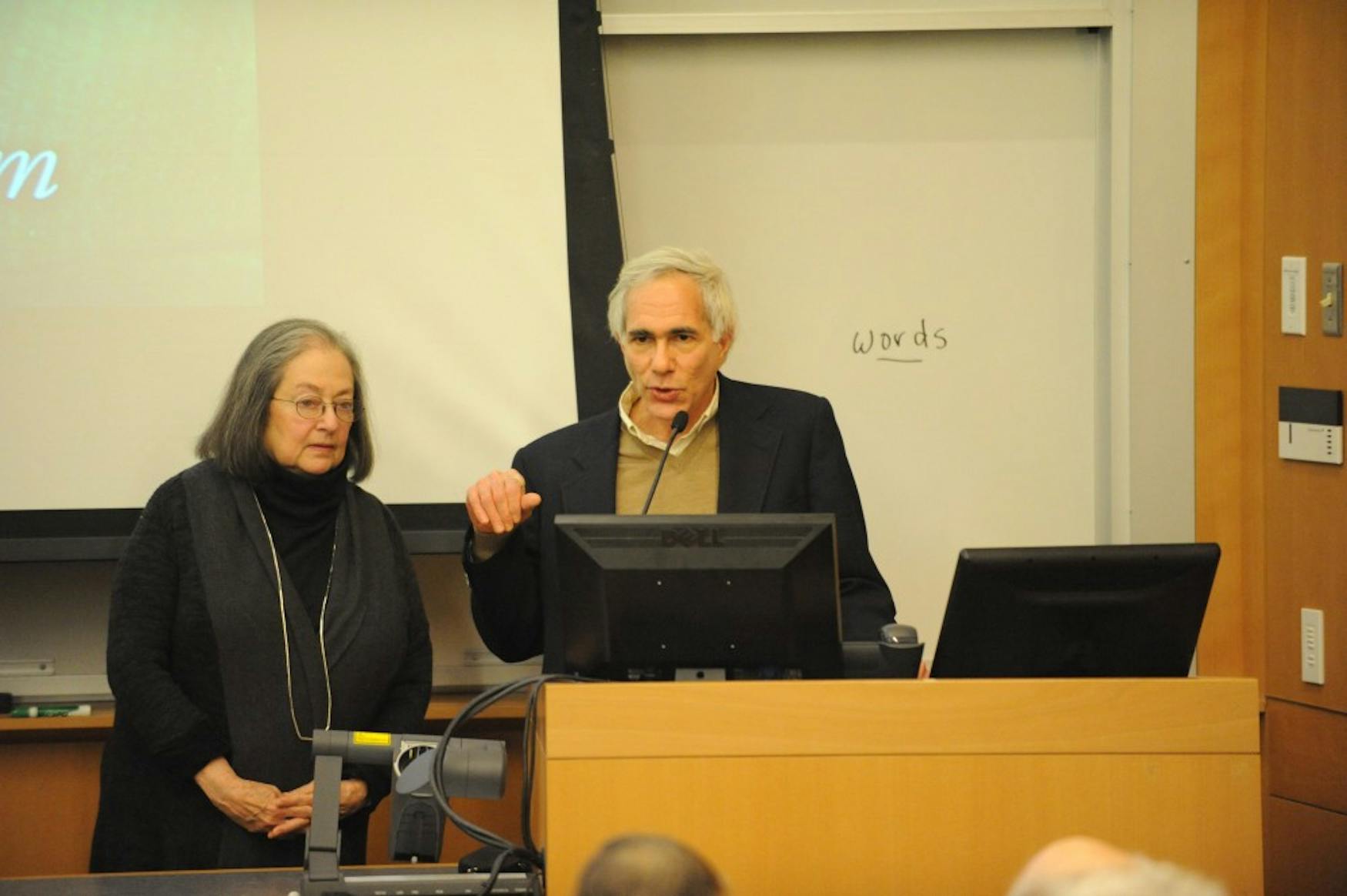Director screens film on cultural and literary critic Walter Benjamin
A screening of Judith Wechsler’s ’62 27th film, The Passages of Walter Benjamin—a documentary detailing the life and work of German cultural and literary critic Walter Benjamin—was held last Tuesday in the Mandel Center for Humanities.
Prof. Steve Whitfield (AMST) began the event by introducing Wechsler. She was not the only member of her family in the Brandeis community—her father was a professor at Brandeis. She later became a professor of art history at Tufts University, as well as a professor at the Massachusetts Institute of Technology. She was also a visiting professor at Harvard University, the University of Bristol and several other institutions.
“It was through my father and the faculty at Brandeis that I was exposed to the History of Ideas as a program of study, and, in a sense, this film can be seen as an extension of that study,” Wechsler told the audience when introducing the film. The film was a pastiche of various images of 19th-century France, pictures of letters and pictures of some of the important individuals in Benjamin’s life.
Just before the screening began, Wechsler introduced Ben Rushman, the film’s editor, and Howard Eiland, a prominent Benjamin expert, who were both in attendance. Eiland appeared several times in the documentary to discuss Benjamin and his work.
The film focused on the Arcades Project, Benjamin’s writings about 19th-century life in Paris. In addition to covering his life in Paris and his work on the Arcades Project, the film also talked about Benjamin’s time in Berlin. It touched on his personal relationships and friendships as well as his relationships with other prominent critics like Max Horkheimer and Theodor Adorno.
It also examined the struggles that Benjamin, who was Jewish, faced after the Nazis rose to power. Benjamin was unable to finish the Arcades Project before he committed suicide in 1940 to avoid being deported back into Nazi hands.
The film screening was followed by a question-and-answer session, during which an audience member said she found the film’s visual technique to be very interesting and that the film’s beauty brought her “close to tears.” Eiland joined Wechsler for this portion.
Wechsler stated that one of the major challenges she faced when she had the idea for the film was how to make a visual project about Benjamin’s work, which is largely text. Wechsler said she reconciled this by choosing 19th-century images that she “hoped would give another depth or understanding [to] his words by having images which don’t illustrate what he’s saying per say, but rather which worked in some ways…to be contingent to what he says.” She added that she, Rushman and Erica O’Connor, who helped to edit the film, used many overlays and montages “because Benjamin himself was very interested in montages.”
“The background was really helpful [in] thinking about Benjamin and what he went through and why he came up with the theories he did; it was an interesting take to add,” commented Sydney Prindle ’18, who attended the screening and is currently enrolled in a History of Ideas course.
Patrick Gamsby, scholarly communications librarian and a lecturer in the History of Ideas, who helped organize the event, said in an interview with the Justice that he enjoyed the film. “I think [the film] was an extraordinarily difficult task that Judith Wechsler took on, to try to capture Benjamin in a documentary,” he said.
Gamsby added that he did not know how she was able to do it, but that Weschler told a great story in a finite amount of time.
The History of Ideas program organized and co-sponsored the event, along with the Center for German and European Studies and the Robert D. Farber University Archives & Special Collections.




Please note All comments are eligible for publication in The Justice.